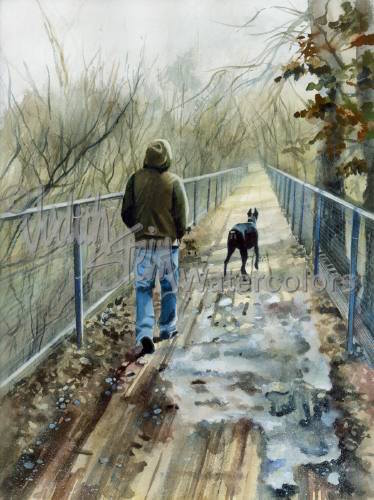
Short of a Vulcan Mind Meld, there’s no way to impart information about dog structure in a short post that takes most of us years to learn. What we can do, however, is try to simplify aspects enough to encourage you to start looking – really looking – at your dog, especially when he or she moves.
Much of what we know about dog structure comes from the horse world, and horsemen knew that if a horse had steep shoulders – that is to say that the horse’s scapula and humerus met at an angle less than 45 degrees, they were in for a bumpy ride. Shoulders with more layback made for a smoother ride. “Angulation” is nothing more spooky than a simple angle formed by bones meeting at a joint.
Dogs are not horses, they have a flexible back and aren’t ridden. Some research suggests that the best-moving trotting dogs have an average shoulder layback of 28 degrees, give or take 5 degrees, while galloping dogs have steeper shoulders, and diggers (like a Fox Terrier) have greater layback. Needless to say, this can vary by breed and function.
When a dog’s upper arm is short and she doesn’t have sufficient reach, but her rear assembly is more angulated than the front, she’s doing to hit the ground with her front foot too early. This is going to cause a jarring impact on her joints, and after awhile, this constant motion is going to stress her ligaments, wear on her joints, and suck the energy out of her. It’s for good reason that this type of movement is called “pounding,” because the dog’s whole front assembly is taking a pounding from having unsound structure. Because your dog loves you, she’ll try to keep up with you, but you should know that her body is taking a beating. What should you do?
You love her as you always have, but instead of hiking up and down trails or competing in high level agility, you tailor the dog’s activities to be more friendly to his joints. Understanding dog structure isn’t just for show dogs or competitive performance dogs, it’s for any dog that likes to go for walks, chase balls, or jump on and off a couch. It’s your job to watch out for her, and it starts by knowing how she’s built. There are dandy books out there, and many great websites. We have our favorites, but perhaps our page friends might recommend their go-to sources for people wanting to learn more about structure without getting too far down a rabbit hole?
“Man & Doberman Pinscher Pet Strolling in Park” by Judith Stein/
www.judithstein.com
https://www.etsy.com/shop/k9stein

There are many worthwhile books, videos, articles available. However Everyone’s library should include Pat Hastings products. I also feel that her seminars should be able to fill a football stadium. For the last several years I have been fortunate enough to live close enough to have her evaluate my litters in person. After all this time, I still learn something new every visit
Thanks for the input, Harriet! We also have been fortunate enough to attend Pat’s seminars, and date ourselves by revealing that we attended one of the first “Tricks of the Trade” seminars. We’ve shown under both Pat and her late husband, Bob, and always liked how they ran their rings!